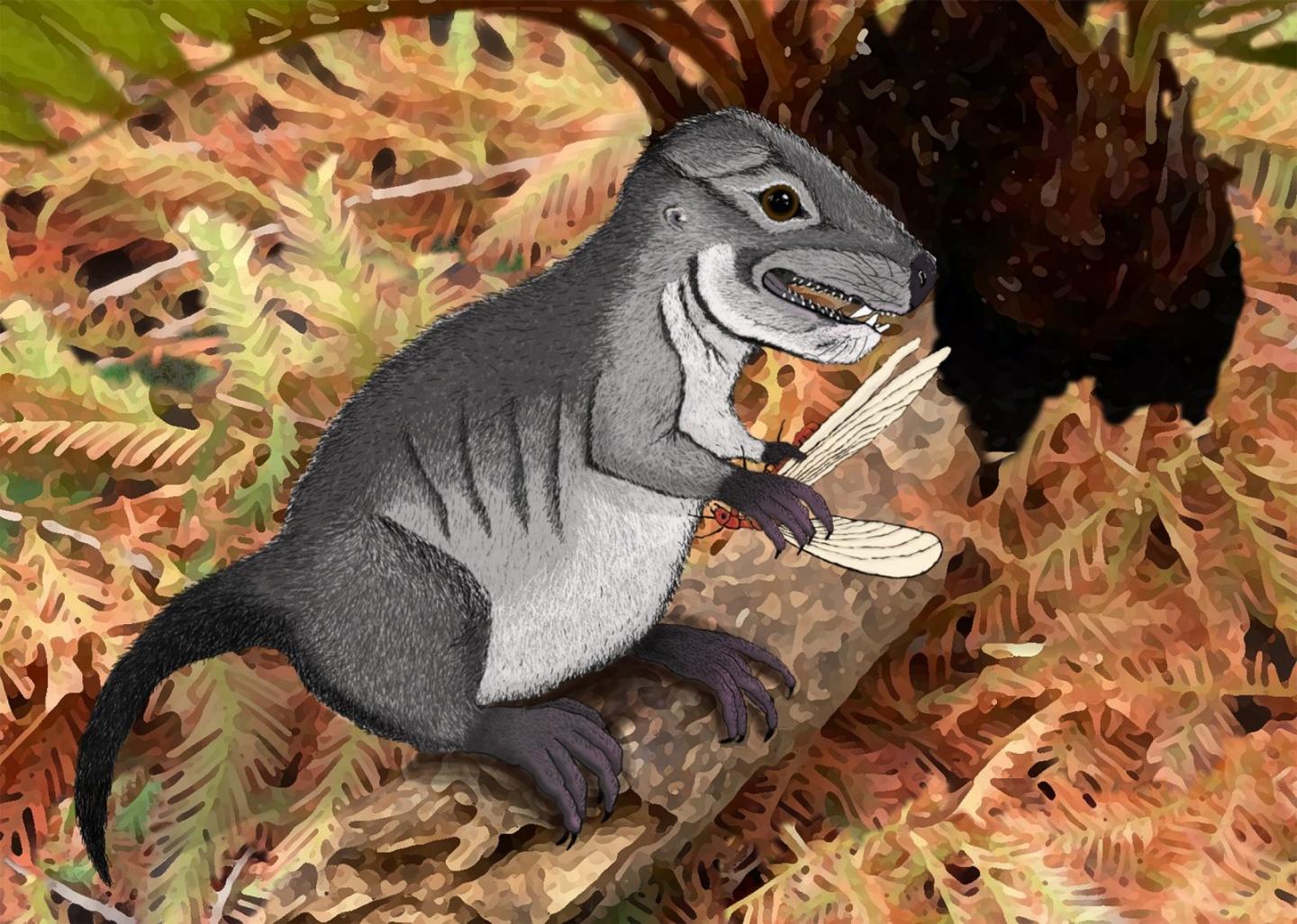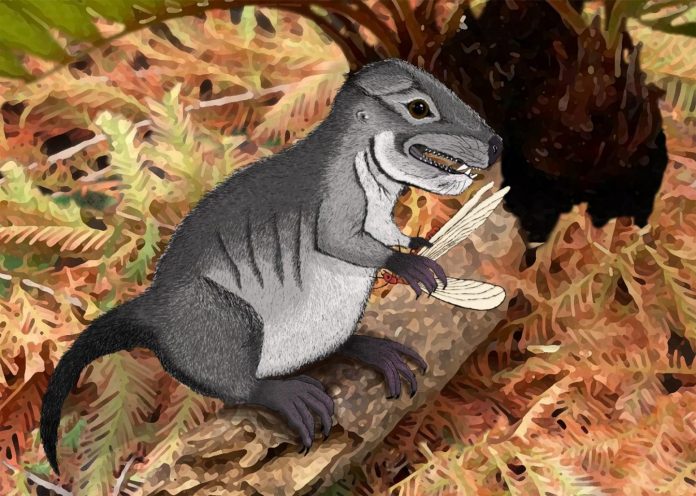
Photo: A Photoshop-created image of how Kataigidodon venetus may have looked, illustrated by Ben Kligman, a Ph.D. student in the Department of Geosciences and Hannah R. Kligman.
view more
Credit Image: Virginia Tech
Fossilized jaw bone fragments of a rat-like creature found at the Petrified Forest National Park in Arizona last year by a Virginia Tech College of Science Ph.D. candidate are in fact a newly discovered 220-million-year-old species of cynodont or stem-mammal, a precursor of modern-day mammals.
The finding of this new species, Kataigidodon venetus, has been published today in the journal Biology Letters by lead author Ben Kligman, a doctoral student in the Department of Geosciences.
“This discovery sheds light on the geography and environment during the early evolution of mammals,” Kligman said. “It also adds to evidence that humid climates played an important role in the early evolution of mammals and their closest relatives. Kataigidodon was living alongside dinosauromorphs and possibly early dinosaurs related to Coelophysis — a small bipedal predator — and Kataigidodon was possibly prey of these early dinosaurs and other predators like crocodylomorphs, small coyote-like quadrupedal predators related to living crocodiles.”
Kligman added that finding a fossil that is part of Cynodontia, which includes close cousins of mammals, such as Kataigidodon, as well as true mammals, from Triassic rocks is an extremely rare event in North America. Prior to Kligman’s discovery, the only other unambiguous cynodont fossil from the Late Triassic of western North America was the 1990 discovery of a braincase of Adelobasileus cromptoni in Texas. Note that 220 million years ago, modern day Arizona and Texas were located close to the equator, near the center of the supercontinent Pangaea. Kataigidodon would have been living in a lush tropical forest ecosystem.
Kligman made the discovery while working as a seasonal paleontologist at Petrified Forest National Park in 2019. The two fossil lower jaws of Kataigidodon were found in the Upper Triassic Chinle Formation. Because only the lower jaws were discovered and are quite small — half an inch, the size of a medium grain of rice — Kligman only has a semi-picture of how the creature looked, roughly 3.5 inches in total body size, minus the tail.
Along with the jawbone fossils, Kligman found incisor, canine, and complex-postcanine teeth, similar to modern day mammals. Given the pointed shape of its teeth and small body size, it likely fed on a diet of insects, Kligman added. (Why are jaw fossils commonly found, even among small specimens? According to Kligman, the fossil record is “biased” toward only preserving the largest and most robust bones in a skeleton. The other smaller or more fragile bones — ribs, arms, feet — disappear.)
Kligman carried out field work, specimen preparation, CT scanning, conception, and design of the study
and drafting of the manuscript. He added that he and his collaborators only discovered the fossils were of a new species after reviewing the CT scan dataset of the jaws and comparing it to other related species.
“It likely would have looked like a small rat or mouse. If you were to see it in person you would think it is a mammal,” Kligman added. Does it have fur? Kligman and the researchers he worked with to identify and name the creature actually don’t know. “Triassic cynodonts have not been found from geological settings which could preserve fur if it was there, but later nonmammalian cynodonts from the Jurassic had fur, so scientists assume that Triassic ones did also.”
The name Kataigidodon venetus derives from the Greek words for thunderstorm, “kataigidos,” and tooth, “odon,” and the Latin word for blue, “venetus,” all referring to the discovery location of Thunderstorm Ridge, and the blue color of the rocks at this site. Kligman didn’t name the creature, though. That task fell to Hans Dieter-Sues, coauthor and curator of vertebrate paleontology at the Smithsonian National Museum.
Additional collaborators include Adam Marsh, park paleontologist at Petrified Forest National Park, who found the jaw fossils with Kligman, and Christian Sidor, an associate professor at the University of Washington’s Department of Biology. The research was funded by the Petrified Forest Museum Association, the Friends of Petrified Forest National Park, and the Virginia Tech Department of Geosciences.
“This study exemplifies the idea that what we collect determines what we can say,” said Michelle Stocker, an assistant professor of geosciences and Kligman’s doctoral advisor. “Our hypotheses and interpretations of past life on Earth depend on the actual fossil materials that we have, and if our search images for finding fossils only focuses on large-bodied animals, we will miss those important small specimens that are key for understanding the diversification of many groups.”
With Kataigidodon being only the second other unambiguous cynodont fossil from the Late Triassic found in western North America, could there be more new species out there waiting to be found?
Kligman said most likely. “We have preliminary evidence that more species of cynodonts are present in the same site as Kataigidodon, but we are hoping to find better fossils of them,” he added.
###
TDnews (tunisiesoir.com)















